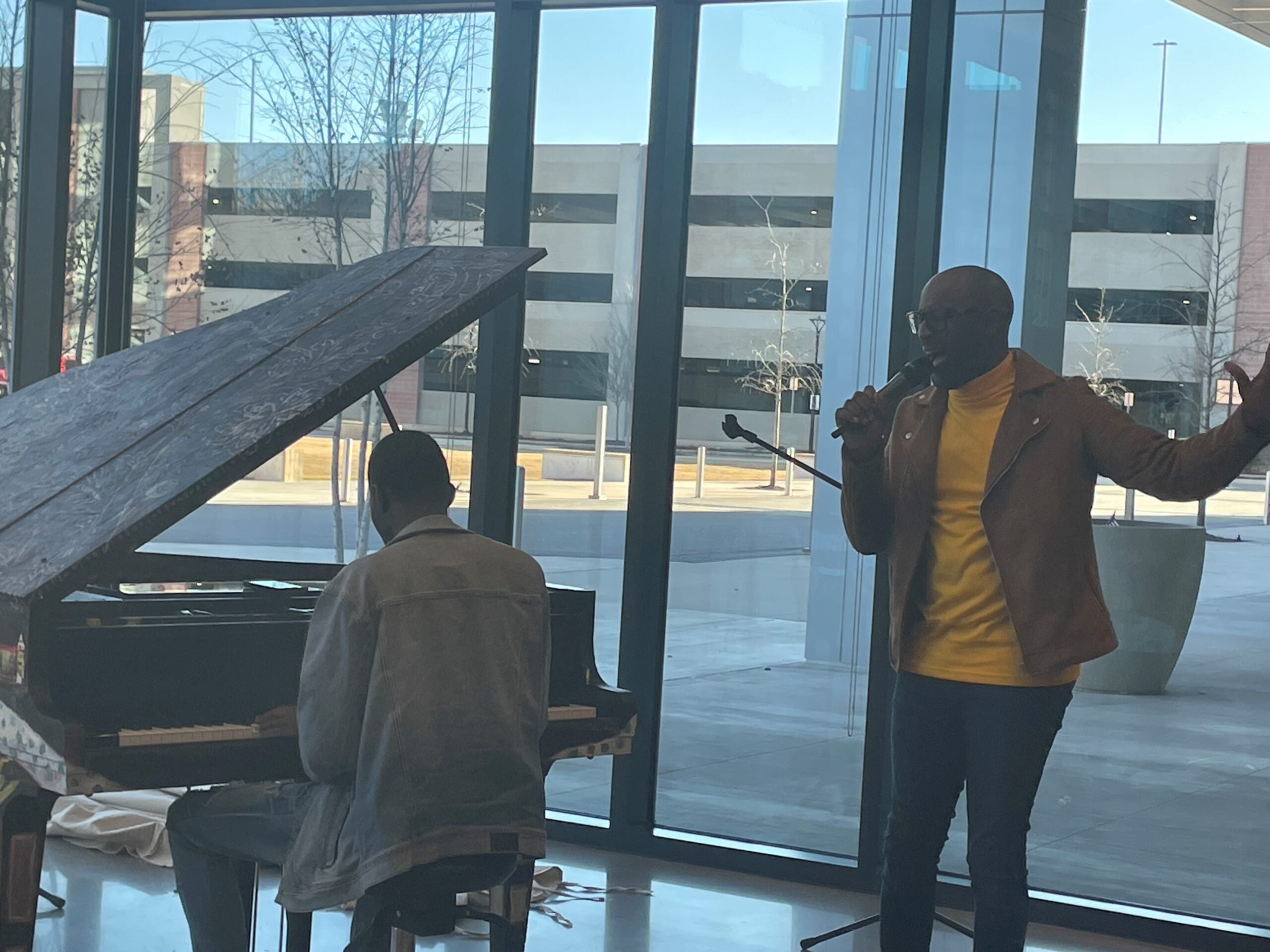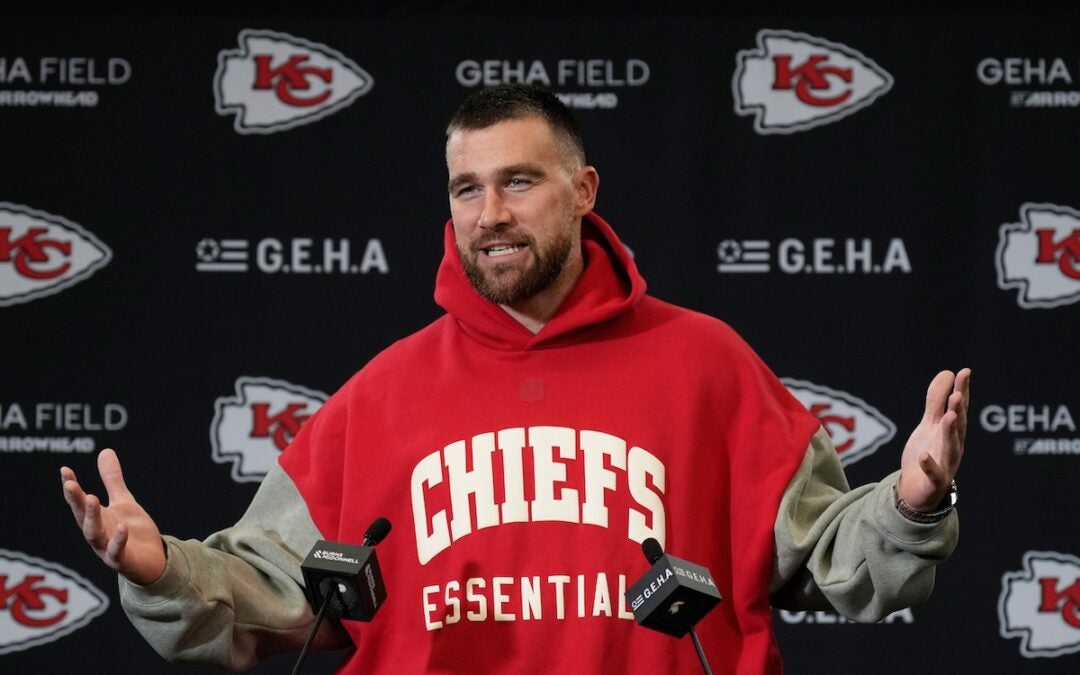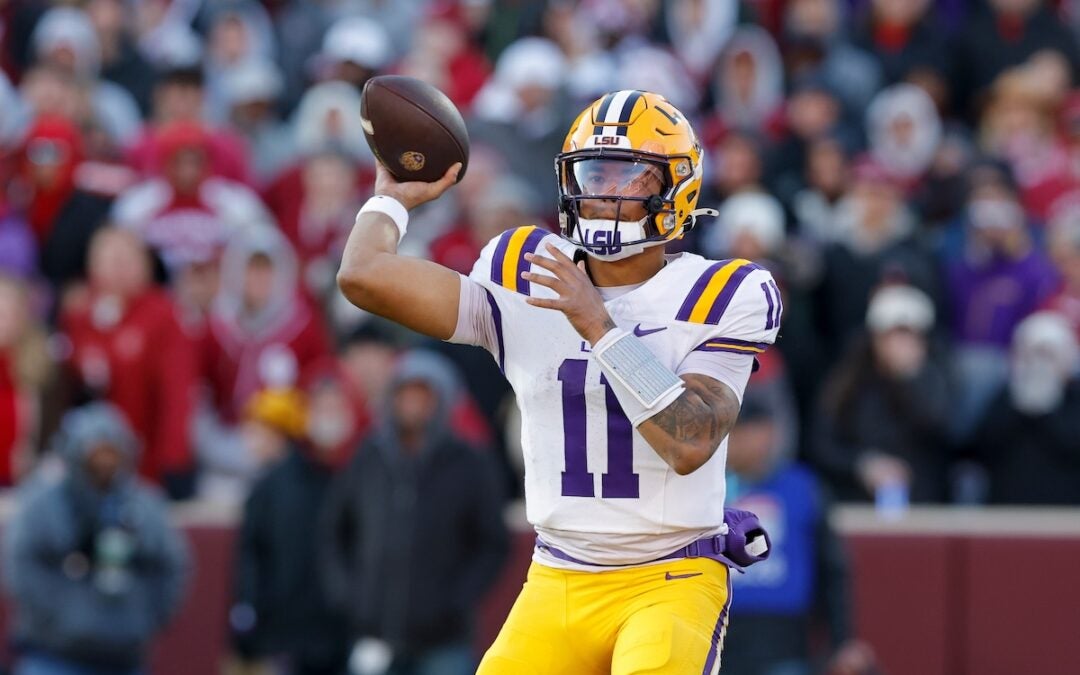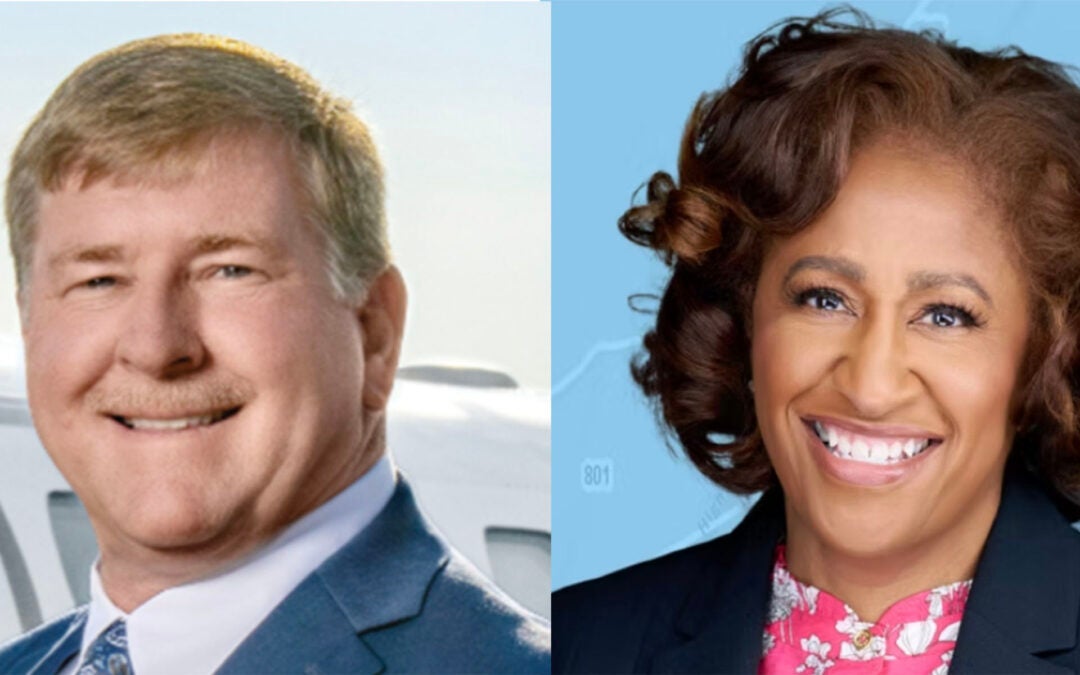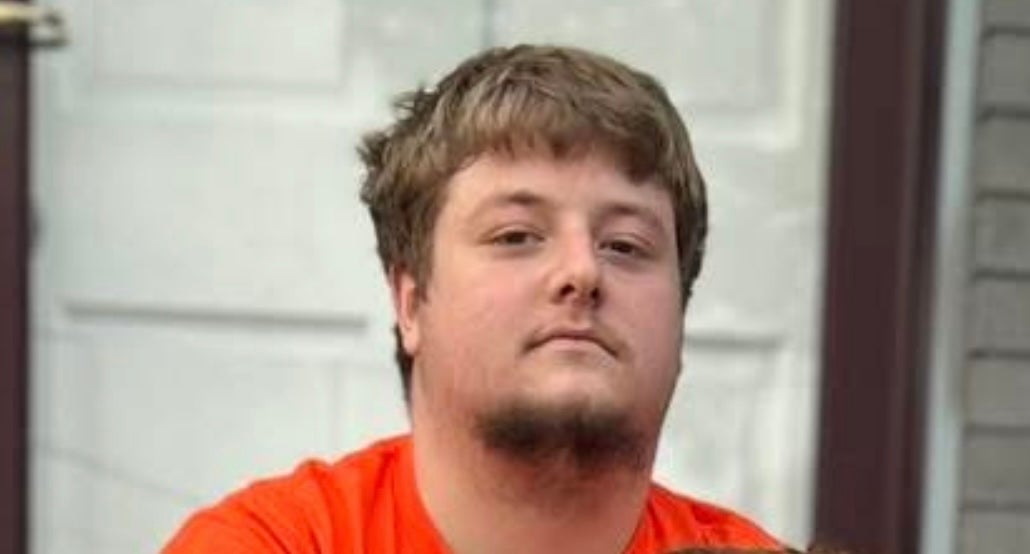The tech industry and the arts converged on Tuesday afternoon at the Shaffer Building of the Georgia Cyber Center, which hosted, alongside the Jessye Norman School of the Arts, the Painted Piano Unveiling Concert.
“There may be scientists that believe that arts and science are two separate entities,” said Eric Toler, executive director of the Georgia Cyber Center. “But I will tell you, as someone coming out of the operations world where we put technology and arts and social sciences together for operational effects or operational outcomes, they’re absolutely necessary to work together.”
The event commemorated not only the donation of a painted piano to the Cyber Center for installation in the lobby of the Shaffer McCartney Building, but also the fourth anniversary of the ribbon cutting at the building itself.
Kevin Chase and his family donated a Kawai Baby Grand piano to the Jessye Norman School’s Painted Piano Project. The school coordinated the installation of its latest project with the Cyber Center, a small gathering in which the renewed piano was christened with performances and presentations.
Gary Dennis, executive director of the Jessye Norman School, approached Aiken-based artist Staci Swider about painting the Kawai Baby Grand some three years ago, but the project was halted by the COVID pandemic.
MORE: City of Augusta hosts Martin Luther King Jr. parade
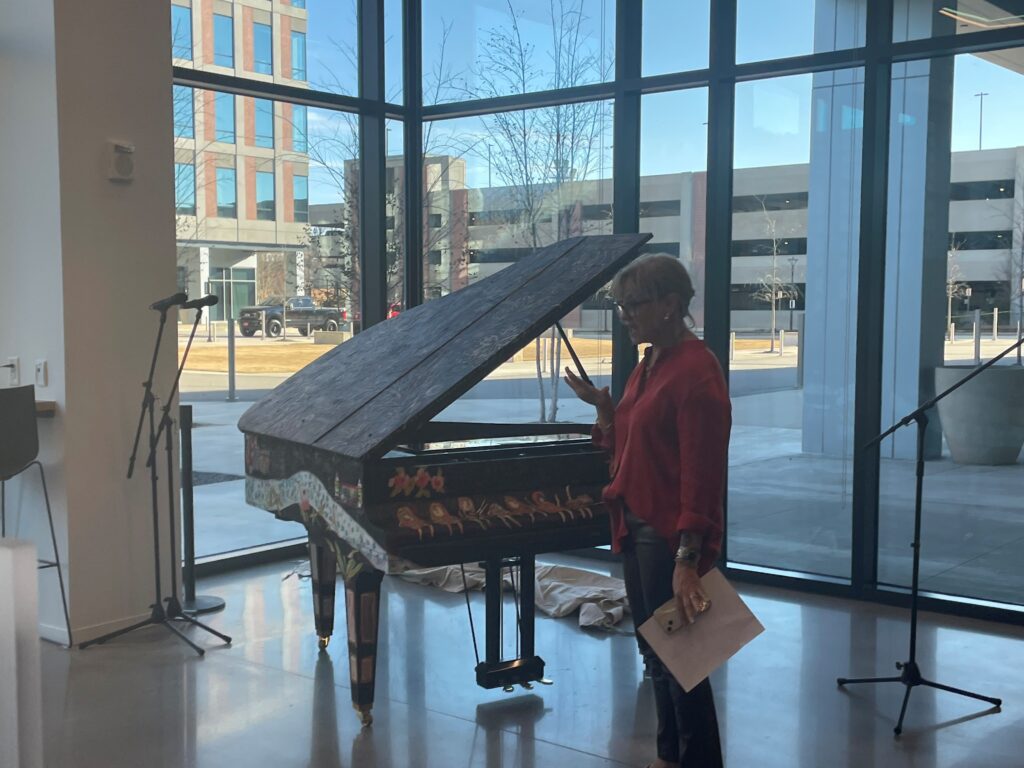
When developing the piano piece with the theme of “innovation,” Swider tapped into her background as a fashion designer for inspiration, remembering working with jacquard fabric.
“Jacquard weaving was originally done using punch cards, and those punch cards are the precursor to the original IBM punch cards,” she said.
From there, Swider began researching the textile industry in Augusta and the construction of the Augusta Canal. This exploration led her to photographs of mill workers, including children, a visual that helped her find thematic connections with burgeoning industrial technology in Augusta history. Swider went so far as to print some of these photos on old IBM cards.
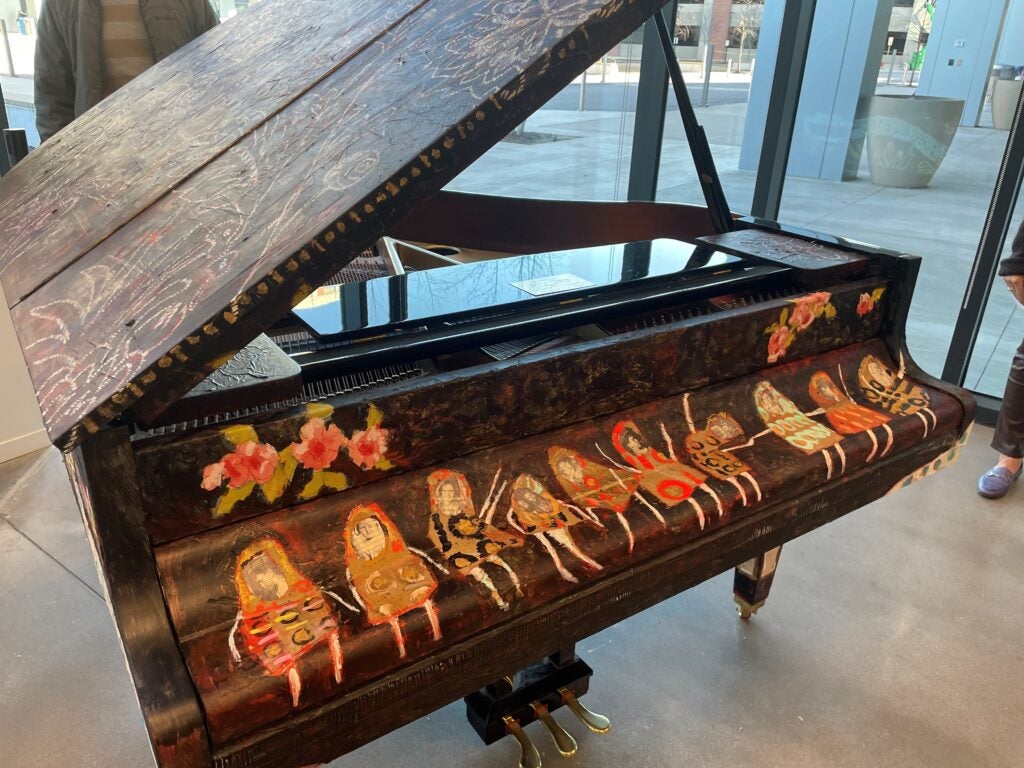
“All of that is worked into the painting in subtle ways that you might have to look for,” she said.
The resulting piece, called “Bounded Together,” is based on an imagining the plight and potential of eight or nine-year-old textile mill workers.
“I decided to focus on what their life could have been like, and had joy,” said Swider. “It could have been in their down time, or when they weren’t working or if they had been born into different circumstances, up on the hill instead of down by the canal.”
After Swider revealed the painted piano, gospel recording artist and Jessye Norman School Music Director Tony Aaron Hambrick performed. Ernest Harden, a pianist and student at Jessye Norman, played the piano while Hambrick sang selections such as “Stand By Me” and “Bridge over Troubled Water.”
MORE: Circle unbroken at McEuen’s Augusta show
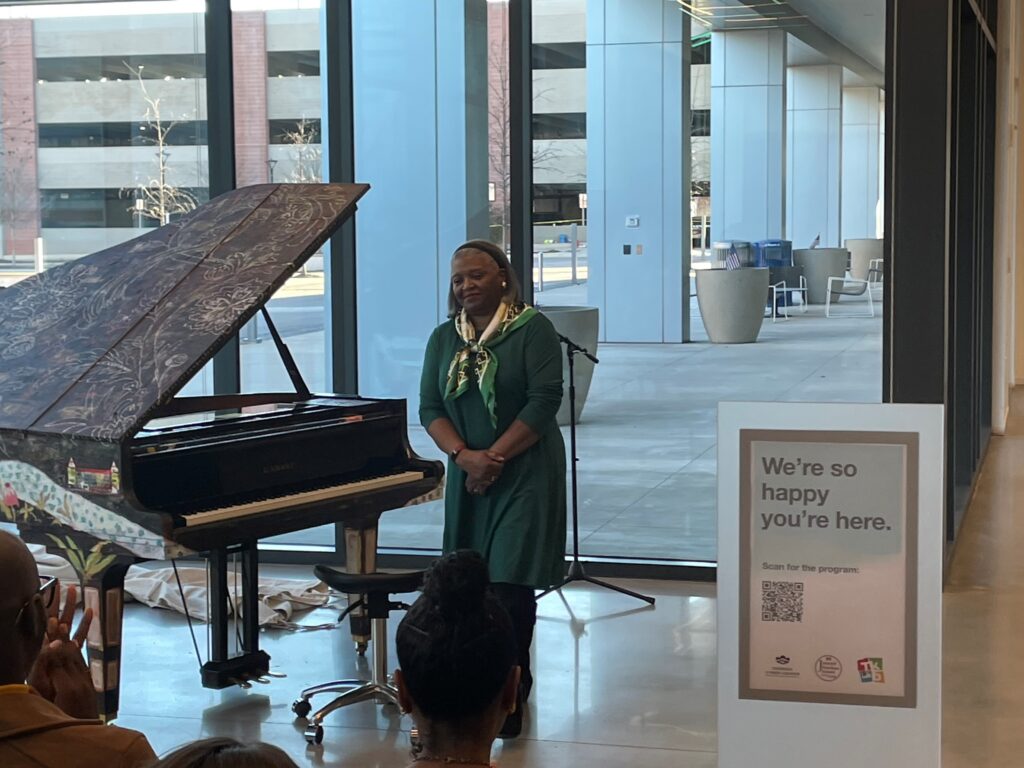
Hambrick’s and Harden’s performance was followed by several jazz and hymn selections from Rosalyn Floyd, professor of piano, accompanying and music theory, in the Department of Music at Augusta University.
Dennis announced that “Bounded Together” would likely be the Jessye Norman School’s final Painted Piano project, but he encouraged others in the community to pick up the mantle. The program began in 2013 when John United Methodist Church donated two pianos to the school. Dennis had been inspired by artist Troy Campbell’s piano deconstruction pieces.
In the years since, several local artists, such as Campbell, Carmen Moses, Baruti Tucker and Leonard Zimmerman, have repainted pianos to be donated.
“It’s a catalyst,” said Dennis. “It’s just a tool to keep putting art in our community. And then when you have a big fish like this say ‘Yes, we’d like to share that with you,’ it’s like validating our work and validating our place in the community.”
Skyler Q. Andrews is a staff reporter covering business for The Augusta Press. Reach him at skyler@theaugustapress.com.

